Positive Education: 15 Best Books & Activities for Teachers
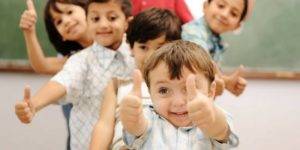 Education has benefited from positive psychology since the field began.
Education has benefited from positive psychology since the field began.
There is no standard for implementing the research findings of positive psychology into the classroom; however, there are many practices that can change the fabric of schools and their students for the better.
Before you continue, we thought you might like to download our three Positive Psychology Exercises for free. These science-based exercises will explore fundamental aspects of positive psychology including strengths, values, and self-compassion, and will give you the tools to enhance the wellbeing of your clients, students, or employees.
This Article Contains:
What is Different About Positive Education?
Positive education focuses on an individual’s strengths, tendencies, and goals. It prepares students to leave school with the ability to manage their emotions, know how to use and develop their strong suits, and emerge as well-rounded humans ready to handle life’s challenges.
Teaching is the greatest act of optimism.
Colleen Wilcox
By offering a less rigid scale for students to compare themselves with other students, this style of teaching reduces competition among peers. It also allows for stronger collaboration and teamwork.
This individualized style of learning requires teachers to identify and develop their students’ socio-emotional skills or character strengths.
Development of these strengths, such as perseverance, curiosity, and kindness, has been correlated with improved academic performance and workplace success. Recent research suggests that emotional intelligence may be the most accurate predictor of how well an employee will fare in a work environment. So why not teach emotional intelligence in schools?
Emotional intelligence begins to develop in the earliest years. All the small exchanges children have with their parents, teachers and with each other carry emotional messages.
Daniel Goleman
There are many ways to integrate strength-building into the school curriculum. Some schools seek to highlight when students display strengths and acknowledge and encourage them. Other schools take a more direct approach.
As one example, several of the teachers at the Geelong Grammar School in Victoria, Australia have specific time blocks within their normal coursework (math, history, etc.) to teach and cultivate positive emotions and character traits.
Another approach to teach character strengths is used by the KIPP (Knowledge is Power Program) network of charter schools. Known as the Character Growth Card, this approach promotes student growth over perfect grades.
The Character Growth Card
In 2013, Canadian-American journalist Paul Tough wrote a book called How Children Succeed, in which he explains why pure intelligence and academic measures were not enough for students to succeed in school.
Instead, Tough advocates for schools to teach character traits in school. If grit and resilience became part of the school curriculum, happy and productive kids might emerge with confidence and leadership skills. Incorporating the education of traits in schools also can enhance student’s focus and academic performance (Tough, 2012).
KIPP also took many of these ideas and made them an official part of how they do things at their high schools. They used a character “report card,” where students were assigned grades not only for academic subjects like math and history but also for how they well they performed on a series of seven character traits. These character traits are from the Virtues In Action research of Dr. Martin Seligman and Dr. Chris Peterson.
Known as the Character Growth Card, this report card highlights growth instead of grades. KIPP’s system offers discussion guidelines and how teachers can measure these traits.
But can we really teach these skills? KIPP does it in a few ways: teachers model the positive behavior, call out positive examples of the character traits in class and discuss the traits.
There is no formal curriculum around “zest” or “gratitude.” Still, KIPP faculty believe that the modeling and celebrating of these examples can have a cumulative effect.
Not everyone agrees with KIPP’s method. In one critique, Professor Jeffrey Snyder argues that we don’t actually know how to teach character strengths; numerically measuring can cause more harm than good.
But even critics of KIPP’s approach agree on one thing: calling attention to character traits as they occur is a powerful step in the right direction.
Other Positive Education Practices
The tenets of positive psychology have been used to create other effective teaching techniques. One of these is the jigsaw classroom, a technique in which students are split up into groups based on shared skills and competencies.
Each student is assigned a different topic and told to find students from other groups who were given the same topic. The result is that each group has a set of students with different strengths, collaborating to research the same topic. Students learn to appreciate the strengths of others, as well as their own.
In these types of classroom settings, teachers might also treat students differently with praise and discipline. A study of praise conducted by Elizabeth Hurlock found praise to be a more effective motivator than punishment, regardless of age, gender, or ability.
When it comes to praise or discipline, positive psychology offers an innovative approach as well.
Restorative Practices
Each school year, some 100,000 students will be expelled from public schools in the United States (Canter 2009). Some of these students cannot return to a school in their entire state; most are forced to leave their local public school for an entire school year.
When it comes to suspensions, where the student stays home for up to 10 days, the yearly count in the US rises to 3 million students.
So many days of learning are lost to expulsions and suspensions.
Thankfully, progressive school administrators are rethinking how we discipline our kids.
How To Let Students Grow from Their Mistakes
Sure, offensive behavior may compromise the safety and learning environment of other kids. But what can help the child learn from his or her mistakes, and not repeat their behavior once back in school? And if expelled, how are students likely to behave in their new environments?
Many argue that these types of punishments alienate these children, physically and emotionally, from their peers. This leads to repeated harmful behaviors, as students internalize the notion that they are bad, with no potential for growth.
There is another way and it is called restorative practices.
Restorative Practices
The idea behind restorative practices is that a behavior needing disciplinary action has a negative effect on the school environment; thus, the negative effect should be the core focus when issuing disciplinary action.
In one imagined example, maybe a student’s excessive speaking out loud during class disrupts the general ability to focus. In traditional discipline, the teacher might ask the student to stop talking, give them a “time out,” or issue a warning.
In a restorative practice, the teacher might ask the student individually, “why are you speaking out of turn?”
Then, the teacher might listen and explain the effect on the other students around her. This could lead to a conversation on when are good times to speak freely, and why the current time is important to focus.
In the extreme case, where a suspension or expulsion might be in store, such as a student provoking or participating in a fight, the restorative practice would be more formal.
The student might participate in a meeting with other students and adult leaders in the school. They could discuss what spurred the student to start the fight, how they were feeling and what thoughts led to their actions.
Next, the conversation could explore meaningful conversations around peer pressure, the importance of nonviolent communication, and how to pause when we feel emotions flood our body.
Questions to guide the conversation might include, “if this happens again, what might you do?” or “do you understand why fist-fights are not okay?” The student might also be assigned activities or programs that would help prevent further fights.
According to one school district, “89 percent of those who go through restorative practices do not re-offend” (Canter 2009). Criminal justice systems have used restorative justice as well. It is not a new concept.
When it comes to helping children learn and process their mistakes, restorative discipline offers a fresh and impacting approach to the destruction of punishment-based systems. If we are to understand the root of behavior, by addressing students.
Where Are We Now?
Since Martin Seligman introduced the basic tenets of positive psychology, the world has implemented it in many ways. Education and school systems have benefited from positive psychology in many ways.
In schools that use positive psychology, students gain important tools.
These tools can make students feel good, nurture meaningful relationships, become well-rounded and bring resiliency to the challenges life faces.
For one specific example, Perth College trains its staff in positive psychology and coaching. They also offer units for ethical issues and social justice. Other schools use the Montessori system to emphasize student-led, project-based curriculums that enhance creativity.
Tell me and I forget. Teach me and I remember. Involve me and I learn.
Benjamin Franklin
If you are curious for more on the power of positive education, Dr. Ilona Boniwell explains it’s potential in the following Ted Talk.
Even organizations are consolidating and organizing the efforts to bring this knowledge to different schools and make it accessible. If you are curious about how to start your Positive Education journey, you can check out these networks, associations, and references below.
Positive Education Networks and Associations
We share two well-known positive education networks below.
International Positive Education Network (IPEN)
IPEN is a network that aims to bring teachers, parents, academics, students, schools, colleges, universities, charities, companies, and governments together to promote positive education.
Positive Education Schools Association (PESA)

This association helps schools and individual teachers to gain access to resources, the latest research, and enabling connections to the leaders in the field of Positive Psychology.
15 Must-Read Books on Positive Education
These are our top 15 recommendations on positive education books addressing topics such as challenging classroom behavior, mindfulness, communication, and more.
Each book is backed by science and highly practical, featuring worksheets, activities, and step-by-step guides to help teachers and academic leaders achieve their goals across academic institutions of all different levels.
1. Teaching That Changes Lives: 12 Mindset Tools for Igniting the Love of Learning – Marilee Adams

Following the story of Emma, a sixth-grade teacher on the verge of resigning, this innovative and practical guide applies the principles of positive psychology to help teachers transform their classrooms and inspire their students’ love for learning.
Buy the book online from Amazon.
2. Playful Learning: Develop Your Child’s Sense of Joy and Wonder – Mariah Bruehl
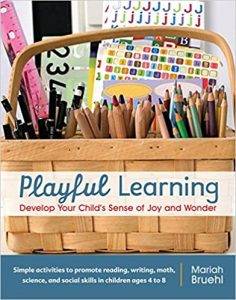
All the activities explored throughout the book are hands on, fun, and easy-to-implement and draw on positive psychology principles to support the development of a range of cognitive and creative skills for children aged 4-8.
Buy the book online from Amazon.
3. Positive Learning Environments: Creating and Maintaining Productive Classrooms – John De Nobile, Gordon Lyons, & Michael Arthur-Kelly
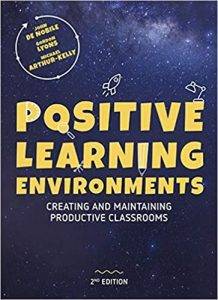
Each chapter draws on the latest findings in positive education and includes advice on topics like classroom communication, physical spaces, and cognitive-behavioral approaches to addressing disruptive behavior.
Buy the book online from Amazon or read the ebook for free on Google Books.
4. Positive Discipline in the Classroom: Developing Mutual Respect, Cooperation, and Responsibility in your Classroom – Jane Nelsen, Lynn Lott & Stephen Glenn
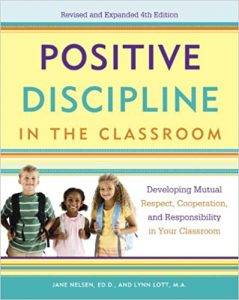
Among the topics explored are respectful communication, solution-oriented approaches to bullying, and strategies to encourage students’ efforts (rather than praise or reward).
The latest edition of this book also has advice to help teachers navigate the new digital distractions that fight for students’ attention in the classroom.
Buy the book online from Amazon and if you’re interested, check out the other titles in the Positive Discipline series.
5. Positive Education: The Geelong Grammar School Journey – Jacolyn Norish
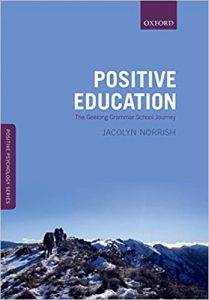
With a foreword from the father of positive psychology, Martin Seligman, the story of Geelong Grammar School represents a hallmark example of positive psychology’s power for bettering the wellbeing of students, teachers, and the broader community.
Buy the book online from Amazon.
6. Building Resilience in Children and Teens: Giving Kids Roots and Wings – Kenneth Ginsburg & Martha Jablow

It is particularly suited to adults who wish to help children who have experienced adverse life events or trauma.
With a range of useful topics ranging from coping, managing stress, and strength-based relationships, this book offers powerful advice for educators wishing to understand the factors that can support or stifle a child’s development of resilience.
Buy the book online from Amazon.
7. Individualized Supports for Students with Problem Behaviors – Linda Bambara & Lee Kern
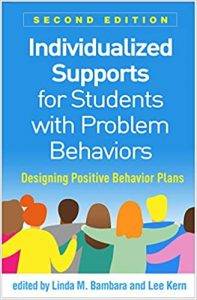
The chapters of the book build sequentially on one another, starting with the conceptual underpinnings of the PBS process and ending with steps for evaluating the efficacy of a PBS intervention.
Buy the book online from Amazon.
8. Positive Strategies for Students with Behavior Problems – Daniel Crimmins, Anne Farrel, Philip Smith & Alison Bailey
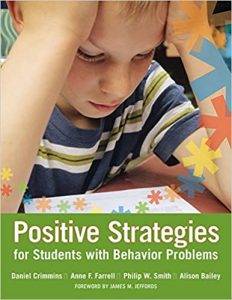
This book, and the strategies explored within, may be particularly helpful for students for whom the previous book’s PBS techniques have not worked.
Buy the book online from Amazon.
9. Positive Academic Leadership: How to Stop Putting out Fires and Start Making a Difference – Jeffrey Buller
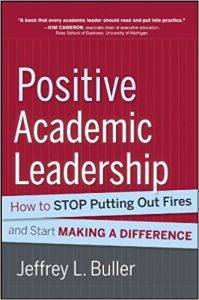
The advice in this book is drawn from findings in neuroscience, psychology, management, organizational behavior, and a host of other fields. Its focus is to help academic leaders improve faculty, staff, and students’ morale through changes to one’s communications, strategic orientation, and perspective.
Buy the book online from Amazon.
10. Lee Canter’s Assertive Discipline: Positive Behavior Management for Today’s Classroom – Lee Canter
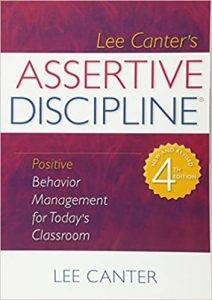
Applying a real-time coaching framework, this book will guide teachers to become effective classroom managers, develop a motivating classroom discipline plan, and support particularly challenging students.
Buy the book online from Amazon.
11. Building Positive Behavior Support Systems in Schools: Functional Behavioral Assessment – Deanne Crone, Leanne Hawken & Robert Horner
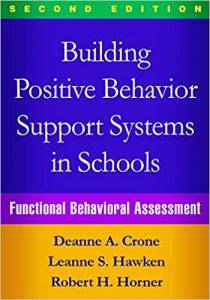
Using clearly outlined, step-by-step procedures, this book walks teachers through the processes of identifying students who need additional support via a functional behavioral assessment, designing and implementing behavior support plans, and evaluating these plans’ efficacy.
Buy the book online from Amazon.
12. Mindful Teaching & Teaching Mindfulness: A Guide for Anyone Who Teaches Anything – Deborah David & Suki Sheth
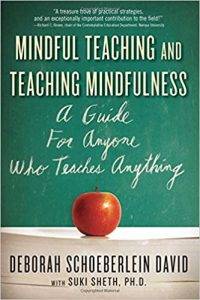
Drawing on the science of mindfulness, this book applies a range of hands-on tools and exercises to empower teachers to deliver education that is attentive, warm, and compassionate to the needs of their students.
Buy the book online from Amazon.
13. Happy Teachers Change the World: A Guide for Cultivating Mindfulness in Education – Thich Nhat Hanh & Katherine Weare
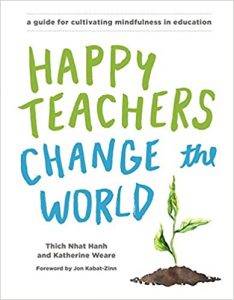
This book begins by giving educators the essential tools to start developing their own mindfulness practice.
Working from this base, the guide then walks the reader through a range of step-by-step techniques to apply with students and inspirational stories of mindfulness education used in practice.
Buy the book online from Amazon.
14. Mindfulness in the Classroom: An Evidence-Based Program to Reduce Disruptive Behavior and Increase Academic Engagement – Joshua Felver & Nirbhay Singh
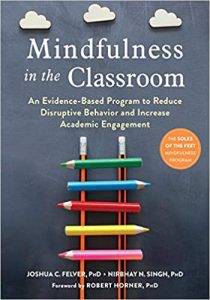
Containing a range of useful supplementary worksheets and handouts, this book aims to do more than reduce disruptive behavior in the classroom. It also seeks to improve the long-term outcomes of students, helping them to reach their potential and thrive well into their adult years.
Buy the book online from Amazon.
15. How Children Succeed: Grit, Curiosity, and the Hidden Power of Character – Paul Tough
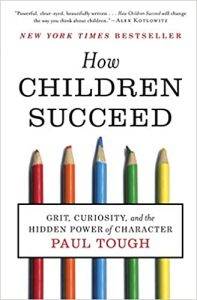
Besides helping teachers understand why some children succeed while others lose their way, it provides a range of tools to help teachers steer disenfranchised children back on the path to success.
Buy the book online from Amazon.
A Take-Home Message
There is a significant call to address challenges around student wellbeing globally. The growing field of positive education seeks to address this call not only by teaching wellbeing but by weaving it into the fabric of education systems as a whole.
By doing this, it is the hope that teachers and educators can better support their most vulnerable students, enabling them to not only survive their schooling but flourish as adults.
We hope you’ve found this article and some of the recommended reading useful. And if you know of additional resources and books not listed, please let us know in the comments below. We’d love to hear from you!
Don’t forget to download our three Positive Psychology Exercises for free.
Let us know your thoughts
Read other articles by their category
- Body & Brain (41)
- Coaching & Application (49)
- Compassion (27)
- Counseling (46)
- Emotional Intelligence (23)
- Gratitude (16)
- Grief & Bereavement (19)
- Happiness & SWB (35)
- Meaning & Values (26)
- Meditation (21)
- Mindfulness (42)
- Motivation & Goals (42)
- Optimism & Mindset (33)
- Positive CBT (24)
- Positive Communication (21)
- Positive Education (41)
- Positive Emotions (28)
- Positive Psychology (33)
- Positive Workplace (38)
- Relationships (31)
- Resilience & Coping (33)
- Self Awareness (21)
- Self Esteem (38)
- Software & Apps (23)
- Strengths & Virtues (28)
- Stress & Burnout Prevention (27)
- Theory & Books (42)
- Therapy Exercises (30)
- Types of Therapy (53)
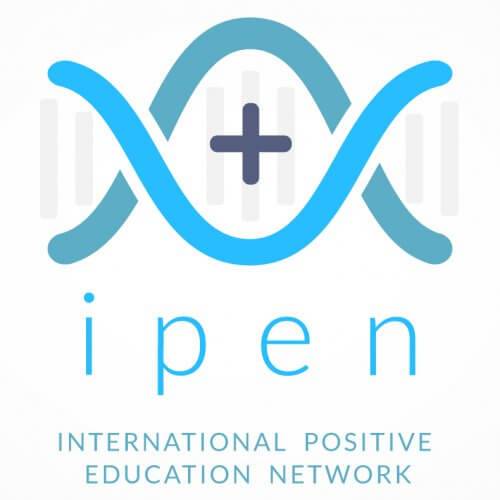


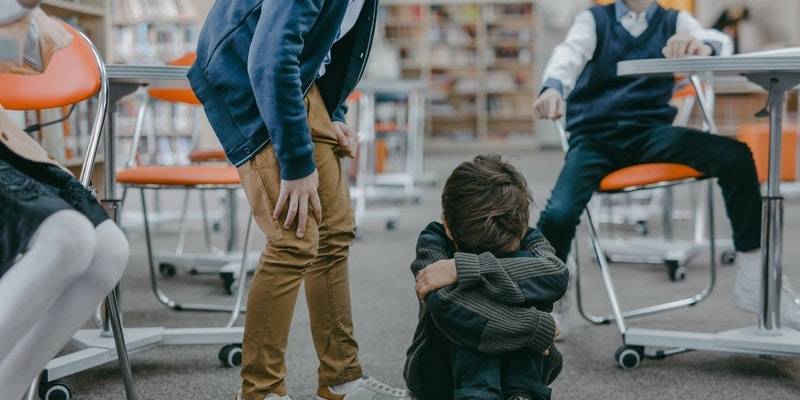
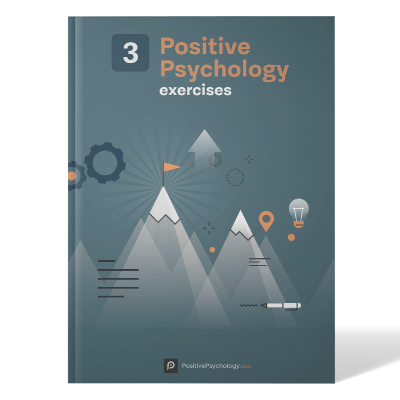
What our readers think
Positive Psychology in SLA (Second Language Acquisition)came out in April 2016. See Amazon for more information. I wrote the chapter on activities in the SLA classroom and have just sent you information about a game I have developed as well.